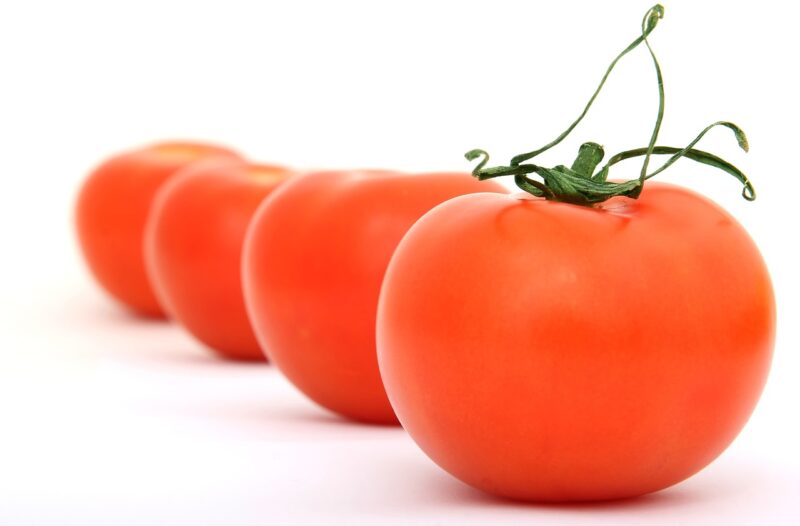Why Tomatoes Were Once Believed to Be Poisonous in Europe
November 15, 2024

The tomato, a staple of modern cuisine, has a colorful history that is both intriguing and bizarre. For centuries, it was not only absent from European dinners but also widely believed to be a poisonous fruit. This misconception dates back to the plant’s origin and the cultural attitudes toward it during the Renaissance.
1. The Origin of the Tomato
The tomato (Solanum lycopersicum) hails from western South America, where it was cultivated by indigenous peoples long before European settlers arrived. It was initially a small, yellow fruit consumed by the Aztecs and Incas. When the Spanish conquistadors encountered it in the 16th century, they brought it back to Europe, where it eventually took root in various cuisines.
However, despite its enticing taste, many Europeans regarded the tomato with skepticism. This hesitation stemmed from the plant’s family; the tomato is a member of the Solanaceae family, commonly known as the nightshade family, which includes several toxic plants like belladonna and mandrake.
2. The Fear of Nightshades
The nightshade family poses a significant reason for the negative reputation of tomatoes. Throughout history, many nightshade plants had established lore as poisonous. For example, belladonna (also known as deadly nightshade) is infamous for its toxic properties, having been used as a poison and in various deadly concoctions.
Due to this association, many people were convinced that tomatoes, with their vibrant colors and strange looks, were equally harmful. The ambiguity surrounding many plants of the nightshade family led to widespread anxieties about the tomato’s safety.
3. Cultural Reactions and Misconceptions
As the tomato was introduced into European culinary culture, various misconceptions sprang up. In England and France, the tomato was often referred to as the “love apple.” This term conjured visions of romance but also suspicion — some believed it could provoke lust due to its seductive name. Additionally, it was erroneously believed to cause digestive problems, deepening the stigma against it.
Moreover, aristocratic families often served tomatoes on pewter plates. The acidity of the tomato reacted with the lead in the pewter, leading to lead poisoning among the wealthy diners. Over time, this reinforced the view that tomatoes were dangerous, as many members of the upper class fell ill after consuming the fruit.
4. Tomatoes in Culinary Traditions
It wasn’t until the 18th century that people began to embrace tomatoes as they gained widespread acceptance across Europe. The warming climate and growing interest in new foods encouraged culinary experimentation. In Italy, the tomato found a home in sauces, pastas, and pizzas, leading to its integral role in Italian cuisine today.
The gradual acceptance of tomatoes can also be attributed to improved knowledge of botany and agriculture. With the rise of scientific understanding, people began to recognize the differences between non-toxic and toxic plants within the nightshade family. The categorization eventually eased fears; the tomato began to shed its label as a poisonous plant.
By the 19th century, tomatoes enjoyed widespread acceptance, not only in Italy but throughout Europe and beyond. They became a symbol of health and abundance.
5. From Poison to Popularity: The Modern Tomato
Today, tomatoes are celebrated not just for their taste, but also for their nutritional benefits. Rich in vitamins C and K, potassium, and antioxidants like lycopene, tomatoes have become a staple in diets around the world. They are an essential ingredient in everything from sauces and salads to stews and salsas.
Modern culinary practices promote the tomato as a health-conscious choice, showcasing its versatility in various dishes. The vibrant red fruit has transformed from an object of suspicion into a symbol of gastronomic delight and health consciousness.
Moreover, the role of tomatoes in the culinary world extends beyond sculptures and side dishes. Their presence in the garden symbolizes culinary nostalgia and a reminder of how perceptions of food can shift dramatically over time.
Conclusion
The story of how tomatoes were once believed to be poisonous in Europe serves as a fascinating lesson in the evolution of food perception. It reflects humanity’s relationship with nature and how mistrust can evolve into widespread acceptance. As we enjoy tomatoes on our plates today, it’s essential to remember that our understanding of food can change, just like our taste.
As more people dive into heirloom varieties or explore different culinary uses, the tomato’s legacy grows with each passing season, further diluted from its once-misunderstood origins into a beloved staple across continents.
Embracing the tomato today serves as a reminder of our ability to overcome fears and enjoy the culinary diversity our world offers.








